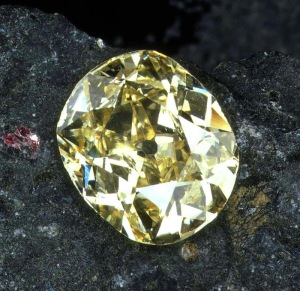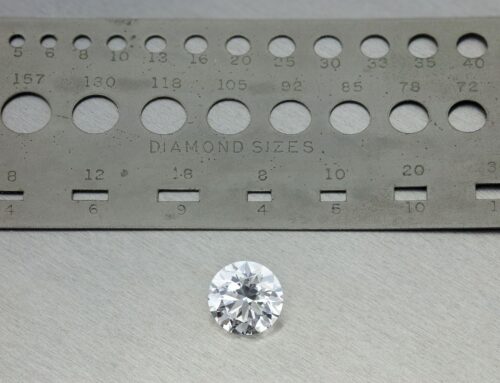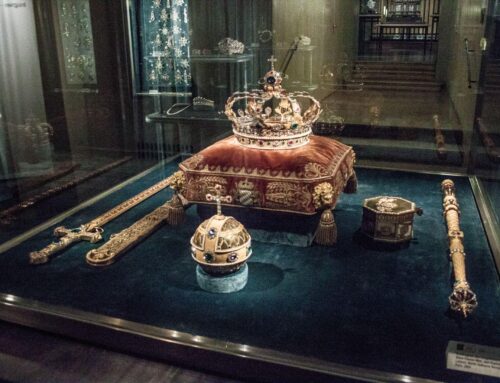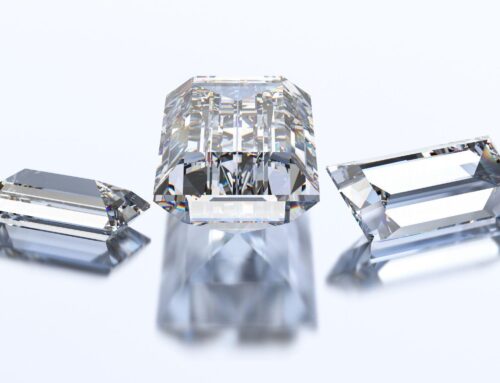by Maya Bornstein
 The Eureka Diamond, the first diamond to be found in South Africa.
The Eureka Diamond, the first diamond to be found in South Africa.The African continent has famously endured a terrible and seemingly endless scale of suffering owing to the diamond trade, and the neighboring countries of Liberia and Sierra Leone are crucial examples. With the indictment of former president of Liberia Charles G. Taylor in May of 2012, the issue of bloodshed in the diamond industry has been more clearly highlighted then every before.
World War II: Conflict Brews in Africa
Intense ferocity in the region really came about in the 1990’s, but its origins lie during the years following World War II. The De Beers Group held (and still hold) powerful dominance over the international diamond industry, including mining, trading, manufacturing, and marketing. Chairman of the company, Sir Ernest Oppenheimer, saw fit to take advantage of post-Depression America to jumpstart the ailing trade. De Beers launched an advertising campaign that proved so effective, it altered the way the entire world views diamonds to this day, driving prices way up and creating an effective monopoly.
These maneuvers were destined to have devastating effects on the source of those diamonds – Africa. Sky-high profit potentials drove vicious rebel groups, like the Revolutionary United Front (RUF) in Sierra Leone, to seize control of diamond-rich land. The RUF is notorious for brutally forcing workers to mine those areas. For workers as well as child soldiers in the region, there are few options of punishment for minor crimes like disobedience or low output: dismemberment or death.
All the President’s Crimes
As a rebel army, the RUF’s aim in mining diamonds is to trade the precious stones for weapons. The practice came to a head in 1991 when civil war broke out in Sierra Leone. Aided and abetted by the National Patriotic Front of Liberia, the rebel forces fought to bring down the government headed by elected president Joseph Momoh. He was overthrown in 1992, and the country remained in a state of war until January of 2002. By that point, over 50,000 had been killed.
Charles G. Taylor was indicted a year later for his participation in the war, which had been motivated by his desire for the blood diamonds mined in Sierra Leone. In exchange for these, Taylor supplied the RUF with weapons and ammunition to support the coup. In 2006, Taylor was formally charged with 11 counts, including acts of terrorism, enslavement, murder, forcibly conscripting children into military service, rape, and many other crimes against humanity. The trial, which took place in the Netherlands, concluded in May, 2012, when Taylor was convicted of all charges.
Sadly, in spite of Liberia being free of its corrupt president and the defeat of the RUF, the bloodshed over diamonds in Africa has not ended. While the Kimberly Process Certification Scheme, instituted in 2003, aims to accurately tell each diamond’s origins and keep conflict diamonds off the market, the process is not airtight. Consumers must be made aware of the violence associated with African diamonds. Only a heightened consumer demand for gems with a clean history can help the slaughter taking place every day in Africa.
Citations:
http://realhistoryarchives.blogspot.com/2007/02/brief-history-of-blood-diamonds.html
http://topics.nytimes.com/top/reference/timestopics/people/t/charles_taylor/index.html
Post Revisions:
There are no revisions for this post.





Leave A Comment